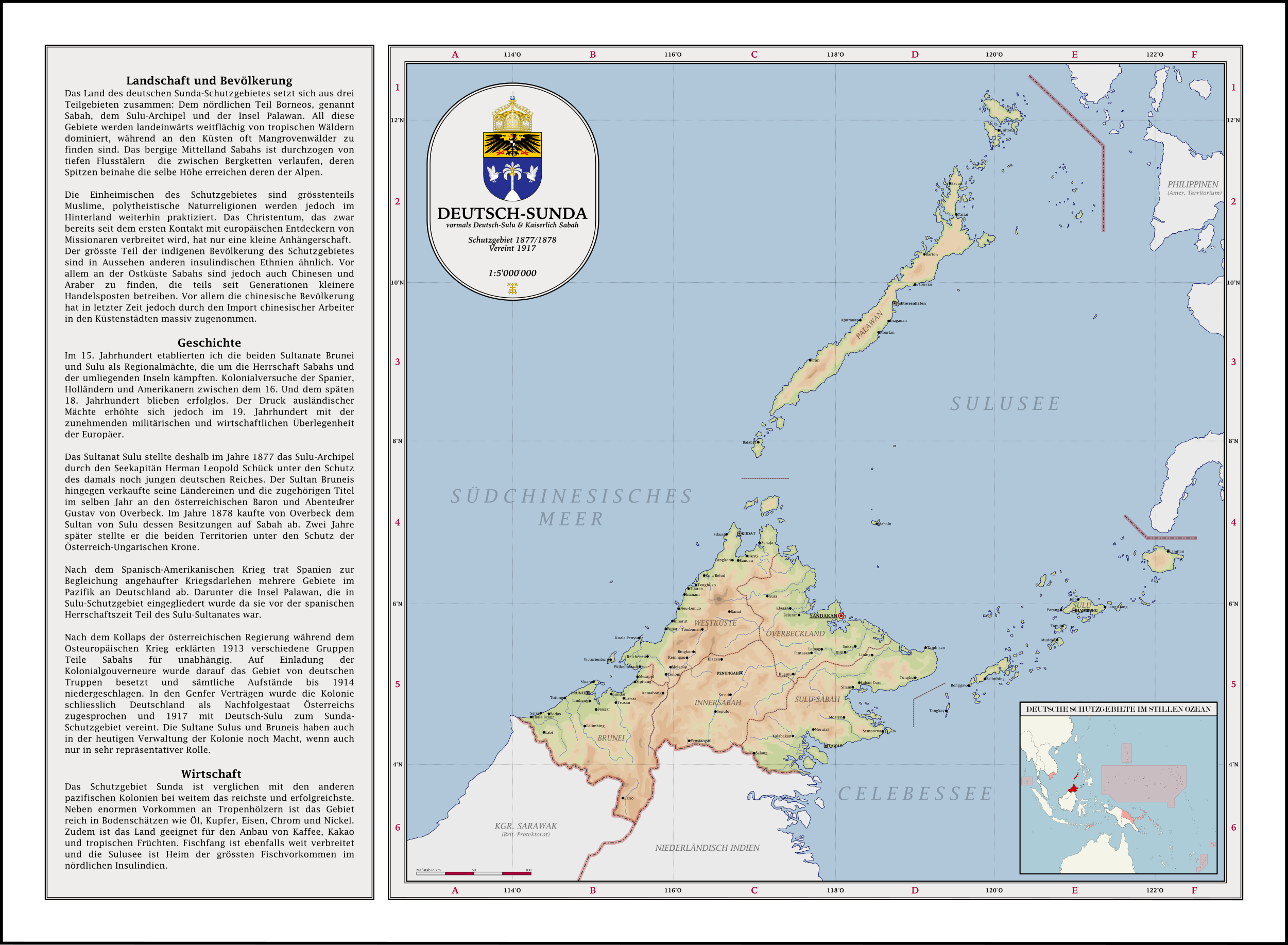HOME | DD
 Yanranay — The German Sunda Protectorate
Yanranay — The German Sunda Protectorate

#map #alternatehistory
Published: 2018-11-16 16:40:50 +0000 UTC; Views: 4020; Favourites: 74; Downloads: 53
Redirect to original
Description
Translation of the text:Landscape and People
The Territory of the German protectorate of Sabah consists of three territories: Northern Borneo, also known as Sabah, the Sulu-Archipelago and the island of Palawan. The inland of all these territories are covered by tropical forests while the coastlines are mostly dominated by mangroves. The mountainous middle lands of Sabah are covered with deep river valleys that are flanked by massive mountain ranges, whose peaks are almost as high as those of the Alps.
The inhabitants of the protectorate are mostly muslims, though polytheistic folk-religions are still practiced in the Hinterlands. Christianity only has a small following despite being spread since first contact with Europeans. The majority of the natives are similar in appearance to other ethnicities of Insulindia. Along Sabahs coasts there are also small Chinese and Arab communities, some of which have been running trade ports for generations. Recently the Chinese population in costal cities has been rising massively due to the import of Chinese laborers.
History
In the 15th Century the two Sultanates of Sulu and Brunei established themselves as regional powers and fought for control over Sabah and the surrounding islands. Colonization attempts by the Spanish, Dutch and Americans between the 16th and late 18th Century were mostly unsuccessful. Foreign pressure increased in the 19th Century with increasing European economic and military supremacy.
In 1877 the Sultan of Sulu chose to establish the Sulu-Archipelago as a protectorate of the still young German Empire via Captain Hermann Leopold Schück. The Sutlan of Brunei decided to sell many of his possessions and titles to the Austrian adventereur Baron Gustav von Overbeck in the same year. In 1878 Overbeck purchased the remaining possessions of Sulu in Sabah. Two years later he put all the territories he owned under the protection of Austria-Hungary.
After the Spanish-American war Spain sold the island of Palawan along several pacific islands to Germany as compensation for unpaid war depts. Palawan was united with the Sulu-protectorate since it had historical ties to the Sultanate.
After the collapse of the Austrian government during the Great Eastern War in 1913 several factions declared parts of Sabah as independent. On invitation of the Austrian colonial governor Sabah was occupied by German colonial troops and all uprisings were quelled by 1914. In the Treaties of Geneva Sabah was awarded to Germany as the successor of Austria. The two protectorates of Sabah and Sulu were united in 1917 into the Sunda-Protectorate. The two Sultans of Sulu and Brunei still play a role in administration, though only a very representative one.
Economy
The Sunda-Protectorate is by far the richest and most successful of the pacific colonies. It is extremely rich in tropical wood and natural resources like Oil,Copper, Iron, Chromium and Nickel. The land is also ideal for growing crops like coffee, cacao and tropical fruits. Fishing is also heavily practiced with the Sulu Sea is the richest in fish in northern Insulindia.
Related content
Comments: 1

Wirklich sehr gute Karte und informative Beschreibung, weiter so
👍: 0 ⏩: 0























